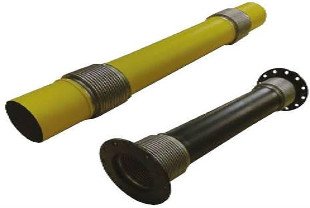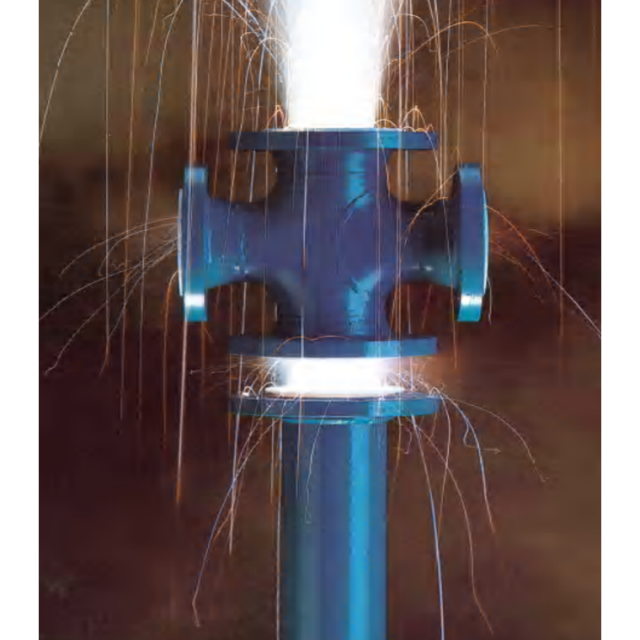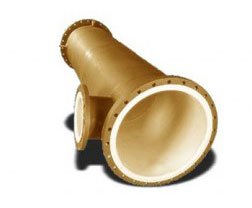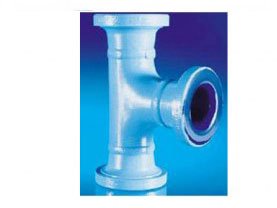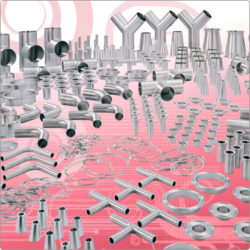Pipeline Fittings
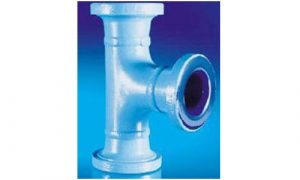
What is thermal pipe expansion and contraction?
With changing thermal conditions the pipeline will expand or contract. Where most pipelines are bolted together, there is a need to allow for the pipe movement associated with this thermal expansion. This is achieved via expansion bellows or joints – like an accordian – that move and allow the pipeline “push” or “pull” owing to thermal changes.
What are the different types of pipeline fittings?
Pipeline fittings generally alter the direction of flow, control the flow, allow visibility of the flow or expansion. Other fittings such as instrumentation for measurement criteria such as temperature, pressure, conductivity etc, but are considered under instrumentation. The fittings include equal tee or elbows, valves, sight glasses or convoluted expansion bellows
What is a lined pipe?
A lined pipe is commonly found in corrosive or abrasive duties. The inner liner is PTFE for chemical resistance such as solvent / acid transfer. The rubber liner is used for abrasion resistance used in the mining sector for slurry transfer
What is a jacketed pipe?
Jacketed pipe is commonly used to protect the product from heat loss. In chocolate manufacture, the pipelines and pumps are jacketed to allow a steam inlet and maintain the temperature above a certain level. Jacketed pipes are also found in areas where the outdoor conditions can have a substantial temperature change.
What is a pipe flange?
In pipe systems, the connection between the pipes can be bolted, in which case you need a flange connection. This has the bolt holes to enable 2 pipes be connected by fitters.The flanges differ in nominal bore and pressure rating for the system they are going to be connected to. They can be metric or imperial dimensions.
Flanges are very commonly used in a lot of industries. Pharmaceutical, chemicals etc
What is a pipe reducer fitting used for?
Where a client wants to move from a larger to smaller pipeline such as a takeoff line or sample line, they can use a reducer fitting. This could be eccentric or concentric.
How can Flexachem help you?
Flexachem provide a number of sanitary pipeline fittings which include valves, sight glasses, bellows and fittings such as elbows.
We also supply stainless steel pipeline fittings as it is commonly used in hygienic applications such as food, beverage, pharmaceuticals and cosmetics. The fittings involved would have differing levels of surface finish depending on the product being transferred.
We supply a number of fittings for storage tanks. These are pressure relief / breathing vents, flame arresters, regulating valves, tank outlet valves, sight glasses and level gauges. We also supply larger items such as tank agitators for mixing, process pump for transferring the contents and other process equipment skids to process the tank products further if needed.
Some of partners include Inoxpa, Cashco, LMP, Macoga and Flowserve.
If you would like to find out more about our full range of Pipeline fittings – why not talk to one of our Experts?
Contact our Process Equipment Team:
Michael Bradley (External) – mob: 086 047 6178
Internal Team
Conor Foley – tel: 021 461 7206
Vicki McGrath – tel: 021 461 7207
Tel: 021 461 7200

